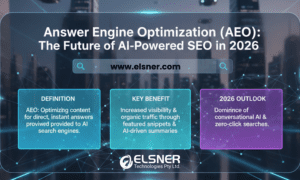Welcome to the future of software development! As technology continues to advance at an exponential pace, so too do the techniques and methodologies used to create innovative and groundbreaking software. In this blog post, we will take you on a fascinating journey through the evolution of software development techniques in the next generation. From Artificial Intelligence-driven automation to Agile methodologies specifically designed for remote teams, we’ll explore how developers are adapting their practices to meet the demands of a rapidly changing digital landscape. Get ready to embark on an exciting exploration into the future of software development that promises endless possibilities and revolutionizes our approach to coding.
Introduction
In software development, techniques are always evolving. As new technologies and frameworks are developed, old techniques become outdated, and new ones must be learned in order to keep up with the times. However, just because a technique is new doesn’t mean it’s better. In many cases, older techniques can still be used effectively, albeit with a few modifications.
When it comes to the next generation of software development techniques, there are a few key areas that are worth exploring. First, developers are increasingly turning to microservices as a way to build applications. This approach allows for greater flexibility and scalability than traditional monolithic architectures.
Second, serverless computing is becoming more popular as it can help reduce costs and increase efficiency. With this approach, developers can focus on writing code rather than managing servers.
Artificial intelligence (AI) and machine learning are beginning to play a bigger role in software development. These technologies can help automate tasks and make apps more intelligent.
The Role of Automation and Artificial Intelligence in Software Development
As the world progresses, so does the technology that we use to make our lives easier. The software development industry is no different—in fact, it may be one of the most rapidly-changing industries out there. Newer and more advanced techniques are constantly being developed in order to keep up with the times. In this blog post, we’re going to explore some of the newer software development techniques that are being used or developed, with a focus on automation and artificial intelligence.
Automation and artificial intelligence are two of the most talked-about topics in the software development industry right now. That’s because they have the potential to completely change the way we develop software. Automation can take care of repetitive tasks that need to be carried out in order to speed up the software development process. And artificial intelligence can be used to create smarter and more efficient algorithms for solving problems.
In the past, most software development was done manually by developers working alone or in small teams. But as automated tools and AI become more sophisticated, it’s possible that these technologies will take on a larger role in software development in the future. This could mean that developers will spend less time coding individual lines of code, and more time working on higher-level tasks such as design and planning. Or it could mean that AI will become involved in writing code itself, making programs even more efficient and effective than they are today.
Whatever direction these technologies go in, one thing is certain: they’re going to have a major impact on the future of software development. As new technologies are developed and perfected, we can only guess what kind of amazing things developers will be able to create with them.
Security Considerations with Next Gen Software Development
When it comes to next gen software development, security considerations are always top of mind. With the constant advancement of technology, new vulnerabilities are constantly being discovered and exploited. In order to stay ahead of the curve, developers need to be constantly vigilant about security risks and take measures to mitigate them.
One of the most common security risks is data leakage. This can occur when sensitive data is inadvertently exposed through a software flaw or security breach. To prevent data leakage, developers need to ensure that all data is properly encrypted and stored in a secure location. They also need to implement strict access controls to restrict who can access sensitive data.
Another common security risk is Denial of Service (DoS) attacks. This occurs when an attacker prevents legitimate users from accessing a system or service. DoS attacks can be very devastating and often result in significant financial losses for businesses. To protect against DoS attacks, developers need to implement strong security controls and monitoring systems. They also need to have contingency plans in place in case an attack does occur.
Security risks will always be present in next gen software development. However, by taking proper precautions, developers can mitigate these risks and ensure that their applications are secure.
Cloud Computing and Its Impact on Next Gen Software Development
In recent years, there has been a dramatic shift in the way that software is developed and deployed. Cloud computing has emerged as a major force, enabling organizations to deploy applications and services more quickly and easily than ever before. This has had a profound impact on the way that next generation software is developed.
In the past, developing and deploying software was a slow and costly process. Organizations had to invest heavily in hardware and infrastructure, and the process of developing and deploying software could take months or even years.
With cloud computing, this has all changed. Organizations can now develop and deploy applications much more quickly and easily, without having to make a large upfront investment in hardware and infrastructure. This has allowed organizations to be much more agile in their approach to software development, and has resulted in a wave of innovative new applications and services.
Next generation software development is all about speed, agility, and innovation. Cloud computing has given organizations the ability to move at lightening speeds, which is why it is such an important part of next gen software development.
DevOps and Its Impact
The DevOps movement has gained a lot of traction in recent years as organizations seek to improve the efficiency of their software development process. In a nutshell, DevOps is all about automating the various steps involved in software development and delivery, from code writing and testing to deployment and monitoring.
There are many benefits to adopting a DevOps approach, including increased speed and agility, better quality control, reduced costs, and improved communication and collaboration between developers and operations teams. However, perhaps the most important benefit of DevOps is its impact on organizational culture.
Traditionally, there has been a divide between developers and operations teams, with each side working in silos and rarely communicating or collaborating with each other. This can lead to tension and conflict, as well as inefficiencies and delays in the software development process.
With DevOps, however, developers and operations teams work together from start to finish, which leads to greater collaboration and communication. This not only results in a more efficient development process, but also helps to foster a more collaborative and positive culture within the organization.
Other Techniques such as AI, Machine Learning, Blockchain etc.
As software development techniques continue to evolve, more and more businesses are turning to artificial intelligence (AI), machine learning, and blockchain technologies to remain competitive. Here, we take a look at how these cutting-edge technologies are changing the landscape of software development.
AI and machine learning are revolutionizing the way software is developed, with developers now able to create applications that can learn and improve over time. This means that businesses can now create bespoke software solutions that are tailored to their specific needs.
Blockchain technology is also having a major impact on the software development landscape. With blockchain, developers can create decentralized applications that are highly secure and transparent. This is particularly useful for financial applications where security is of paramount importance.
Conclusion
The software development landscape is continually evolving and it is therefore necessary to stay up-to-date on current best practices. From leveraging agile methodology and continuous integration, to implementing platform specific tools such as Kubernetes or even internal proprietary tools, developers need to keep a close eye on emerging trends so that they can remain competitive in the ever changing IT environment. As technology advances we must embrace new methods of developing products for our users while upholding an effective manner of managing software projects.



































